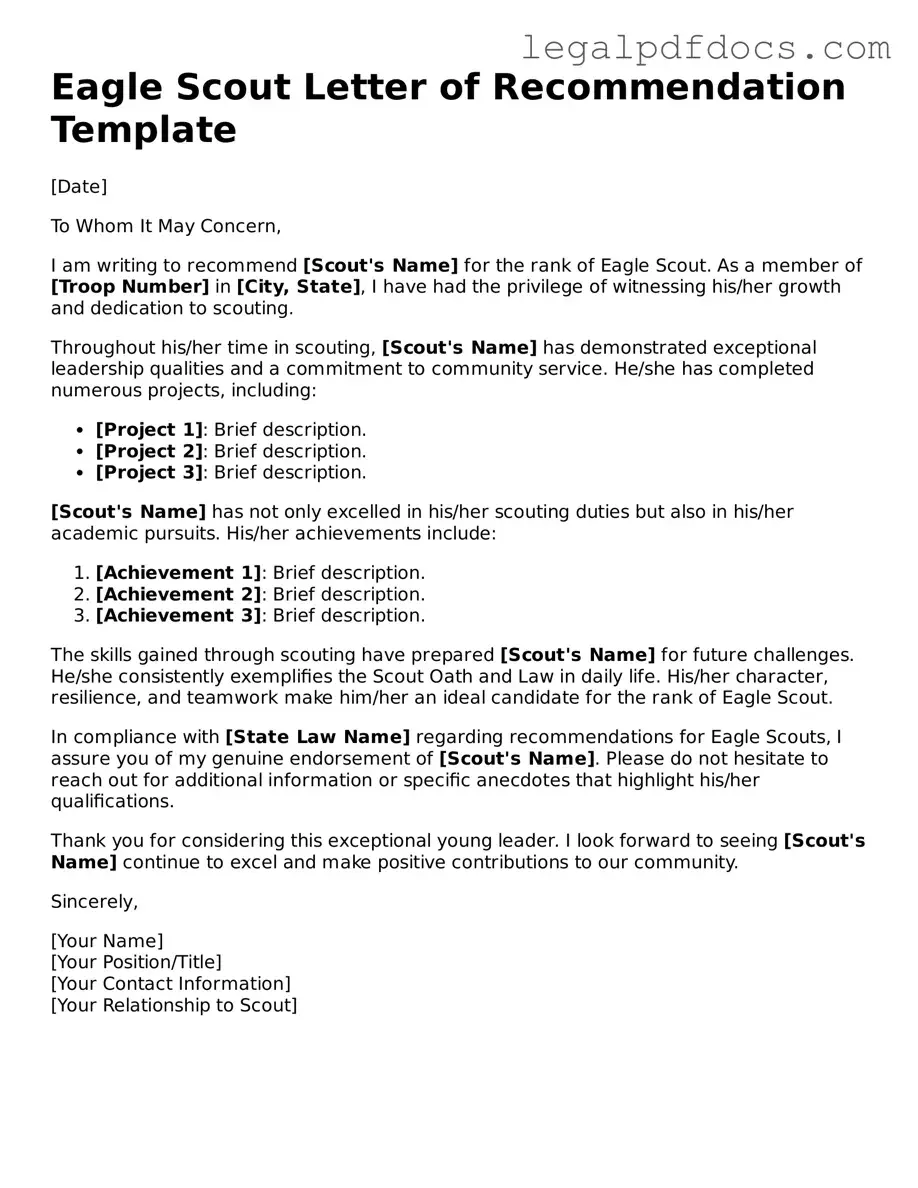Achieving the rank of Eagle Scout is a significant milestone in a young person's life, representing dedication, leadership, and commitment to community service. One essential component of this journey is the Eagle Scout Letter of Recommendation form, which plays a vital role in the evaluation process. This form provides an opportunity for mentors, community leaders, and other influential figures to share their insights about the candidate's character, accomplishments, and potential. Typically, the form requires detailed information about the recommender, including their relationship to the Scout and their qualifications to provide an assessment. It also prompts specific questions designed to elicit meaningful reflections on the Scout's achievements and personal qualities. Each recommendation contributes to a holistic view of the candidate, helping the Eagle Scout Board of Review make informed decisions. Completing this form thoughtfully can significantly impact a Scout's journey, highlighting their strengths and readiness to embrace the responsibilities that come with being an Eagle Scout.
